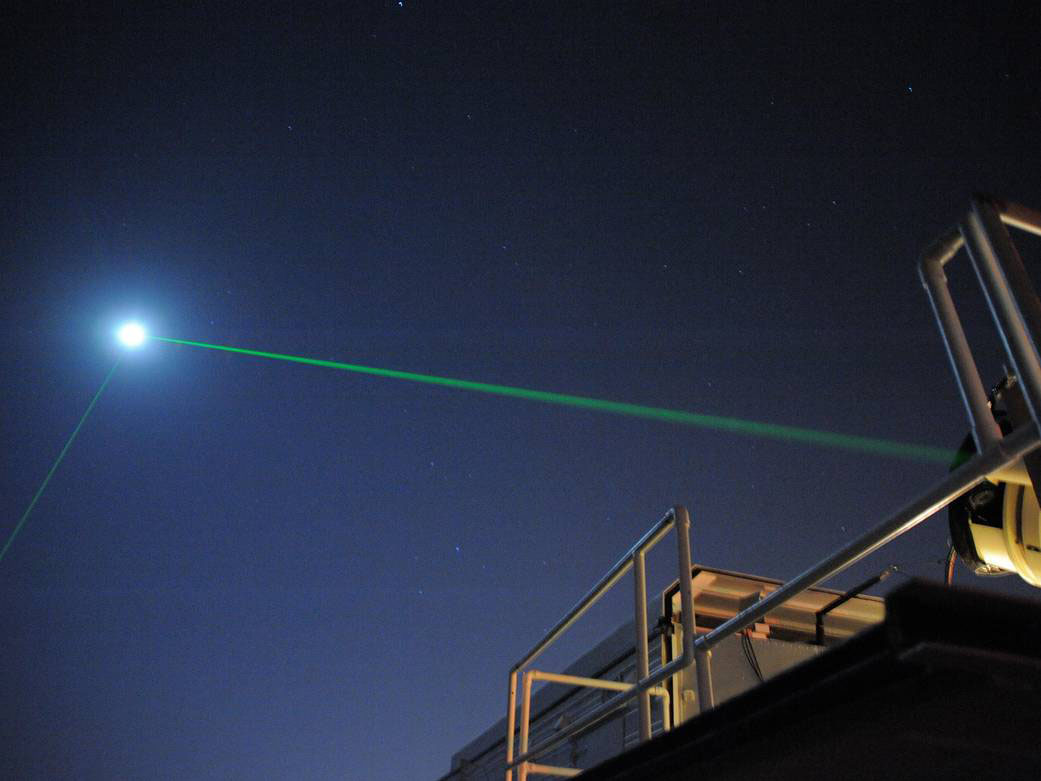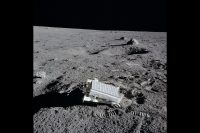This photograph shows the laser-ranging facility at the Goddard Geophysical and Astronomical Observatory in Greenbelt, Md. The facility helps NASA keep track of orbiting satellites. Both beams shown, coming from two different lasers, are pointed at NASA’s Lunar Reconnaissance Orbiter, which is orbiting the Moon. Here, scientists are using the visible, green wavelength of light. (NASA)
Home This photograph shows the laser-ranging facility at the Goddard Geophysical and Astronomical Observatory in Greenbelt, Md. The facility helps NASA keep track of orbiting satellites. Both beams shown, coming from two different lasers, are pointed at NASA’s Lunar Reconnaissance Orbiter, which is orbiting the Moon. Here, scientists are using the visible, green wavelength of light. (NASA) This photograph shows the laser-ranging facility at the Goddard Geophysical and Astronomical Observatory in Greenbelt, Md. The facility helps NASA keep track of orbiting satellites. Both beams shown, coming from two different lasers, are pointed at NASA's Lunar Reconnaissance Orbiter, which is orbiting the Moon. Here, scientists are using the visible, green wavelength of light. (NASA)
This photograph shows the laser-ranging facility at the Goddard Geophysical and Astronomical Observatory in Greenbelt, Md. The facility helps NASA keep track of orbiting satellites. Both beams shown, coming from two different lasers, are pointed at NASA’s Lunar Reconnaissance Orbiter, which is orbiting the Moon. Here, scientists are using the visible, green wavelength of light. (NASA)




